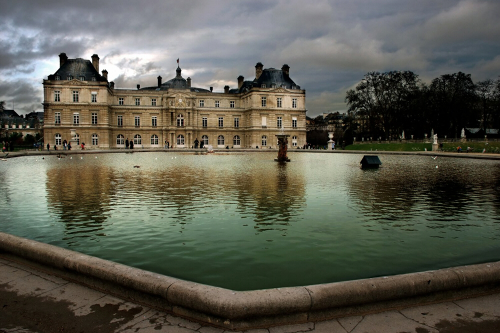Luxembourg Makes All Public Transport Free
卢森堡成为全球首个公共交通免费国家
With a population of 602,000, Luxembourg is one of Europe’s smallest countries – yet it suffers from major traffic jams.
卢森堡有60.2万人口,是欧洲最小的国家之一,但也面临严重的交通堵塞。
But that could be about to change. As of March 1, 2020, all public transport – trains, trams and buses – in the country is now free.
但这种情况可能即将改变。从2020年3月1日起,卢森堡所有公共交通——火车、电车和公共汽车——会免费运营。
The government hopes the move will alleviate heavy congestion and bring environmental benefits, according to Dany Frank, a spokesperson for the Ministry of Mobility and Public Works.
交通与公共工程部发言人丹尼·弗兰克表示,政府希望此举能缓解严重的交通拥堵,并有益于环保。
Landlocked Luxembourg is one of the richest countries in Europe, with the highest per capita GDP in the European Union.
地处内陆的卢森堡是欧洲最富裕的国家之一,人均GDP居欧盟之首。
Taking up 2,586 square kilometers, Luxembourg is roughly the size of Rhode Island. From the capital of Luxembourg City, Belgium, France and Germany can all be reached by car in half an hour.
卢森堡占地2586平方公里,面积和美国罗德岛差不多大。卢森堡的首都卢森堡市距离比利时、法国和德国车程都在半小时内。
High housing costs, especially in Luxembourg City, mean more than 180,000 of its workforce commute from those neighboring countries every day.
该国,尤其是卢森堡市,高昂的住房成本意味着每天有超过18万员工从这些邻国通勤上班。

“Luxembourg is a very attractive place for jobs,” explains Geoffrey Caruso, a professor at the University of Luxembourg and the Luxembourg Institute of Socio-Economic Research specializing in land use and transportation.
卢森堡大学和卢森堡社会经济研究所专门从事土地利用和交通研究的教授杰弗里·卡鲁索解释说:“卢森堡是一个非常有吸引力的就业目的地。”
But its “booming economy” and high concentration of jobs have led to congestion issues, he says.
但他表示,卢森堡“蓬勃发展的经济”和就业的高度集中导致了交通拥堵问题。
In 2016, Luxembourg had 662 cars per 1,000 people, and driving is a “primary means of transportation” for commuters, according to a 2017 report by the Ministry of Sustainable Development and Infrastructure.
根据可持续发展和基础设施部2017年的一份报告,2016年,卢森堡每1000人拥有662辆汽车,驾驶是通勤者的“主要交通方式”。
That year, drivers in Luxembourg City spent an average of 33 hours in traffic jams. It fared worse than European cities Copenhagen and Helsinki, which have comparable population sizes to all of Luxembourg – yet drivers in both only spent an average of 24 hours in traffic.
当年,卢森堡市的司机平均在交通堵塞中花费33个小时。卢森堡市的拥堵情况比哥本哈根和赫尔辛基等欧洲城市更糟,这两个城市的人口规模相当于整个卢森堡,但司机堵在路上的时间平均仅为24小时。
Luxembourg’s public transport system covers the whole country and costs $562 million per year to run. Each year, it generates around $46 million in ticket sales, according to the ministry.
卢森堡的公共交通系统覆盖全国,每年的运营费用为5.62亿美元(约合人民币39.2亿美元)。据交通与公共工程部统计,每年的公共交通售票收入约为4600万美元。
The government is putting up the cost of making it free, Frank says. “The country at this very moment is in really good shape. We, the government, want the people to benefit from the good economy.”
弗兰克说,政府会承担公共交通免费的成本。“卢森堡目前经济运行良好。政府希望人民从中受益。”
Caruso is concerned that making transport free may unintentionally deter people who would normally walk or cycle in urban areas. “Rather than walking 500 meters, you see a bus coming and you say, ‘I (can) get on and travel 500 meters because it’s free,’” he says.
卡鲁索担心,免费的公共交通可能会无意中让那些通常在城区步行或骑车的人放弃之前的习惯。他说:“平时走500米的路,现在看到一辆公交车开过来,你会说,‘这段路我可以搭公交,因为公交免费。’”
He adds, however, that the new scheme can signal important changes ahead when it comes to Luxembourg’s reliance on driving.
但他补充说,就卢森堡对驾驶的依赖而言,新计划可能预示着将来会出现重大变化。
“(The government) might say, ‘It’s important that you ditch your car, and look, we made public transport free’ – and maybe this is helpful given the immense cultural shift we need.”
“(政府)可能会说,‘弃车出行很重要,看,我们让公共交通免费了’。考虑到我们需要的巨大文化转变,这或许是有帮助的。”
英文、中文版本下载:http://www.yingyushijie.com/shop/source/detail/id/2238.html








